From the beginning of the year, law enforcement and cantonal police departments gradually put the city’s largest building into operation, inevitably including those arrested. Now the move is complete.
Anyone who wants to enter the new Zurich Police and Justice Center (PJZ) is not allowed to take firearms or batons with them, that’s clear. The sign in the entrance foyer with 16 red-bordered prohibition signs indicates that this is a special building. Neither laser pointers nor hiking sticks are permitted, nor are scooters or skateboards, despite the long corridors in the huge building.
Visitors have to go through a security gate like at an airport, with ID checks and a metal detector. The PJZ with over 2000 jobs is the largest and best secured new building in the canton of Zurich. It combines security and criminal prosecution under one roof, which is unique in Switzerland to this extent.
In addition to the canton police, which have their operations center in the new location, the public prosecutor’s offices, parts of the penal system, forensics for technical investigations work next door to each other, and the joint police academy for the canton and the city is also located here. The third state authority is also represented with the compulsory measures court. The new Zurich West prison with 241 places for police and pre-trial detention has been integrated.
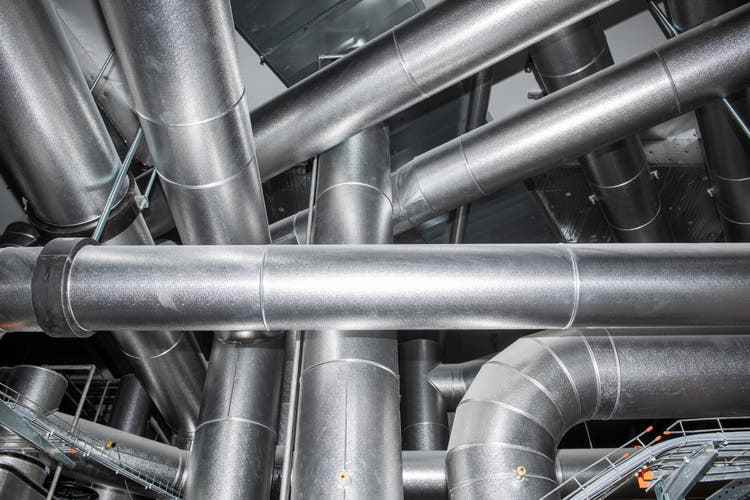
In the PJZ, even the building services, here the ventilation pipes, are impressive.
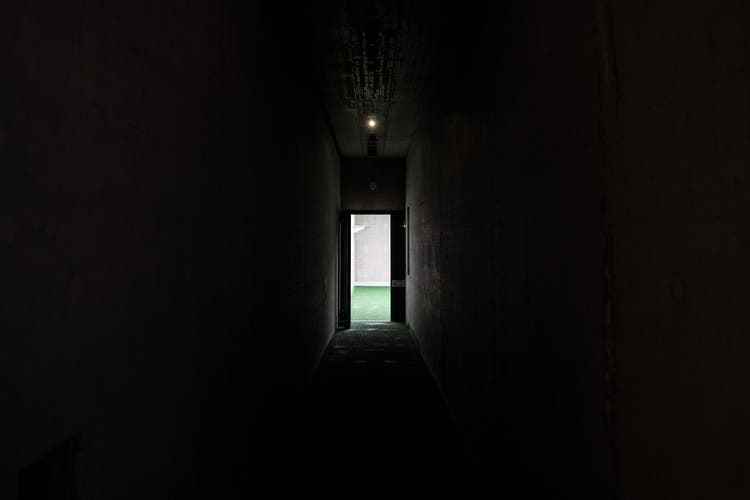
No path to freedom, but out of prison to the promenade.
The PJZ was officially inaugurated on Friday in the presence of numerous members of the authorities. On Saturday from 9 a.m. to 5 p.m. on the site next to the railway tracks, an event with information about the institutions in the PJZ will be held for the public. A limited, drawn number of visitors can explore the PJZ on a short tour. An exclusive thing: Anyone who doesn’t work in the PJZ or has a job as a lawyer, interpreter, expert or cleaner can actually only get in by being arrested.
More functional than a palace
The PJZ has an eventful history. It began around the turn of the century with the first plans to use the area of the freight station for the needs of the police and the judiciary. If you add earlier unsuccessful attempts to use the Zurich barracks area for the purposes of today’s PJZ, it goes back twenty years to the army’s departure from the city of Zurich.
Critics were numerous and came from different political camps. They denounced the PJZ as a “forbidden city” and “justice palace”. Now that the house is standing, what is to be made of these?
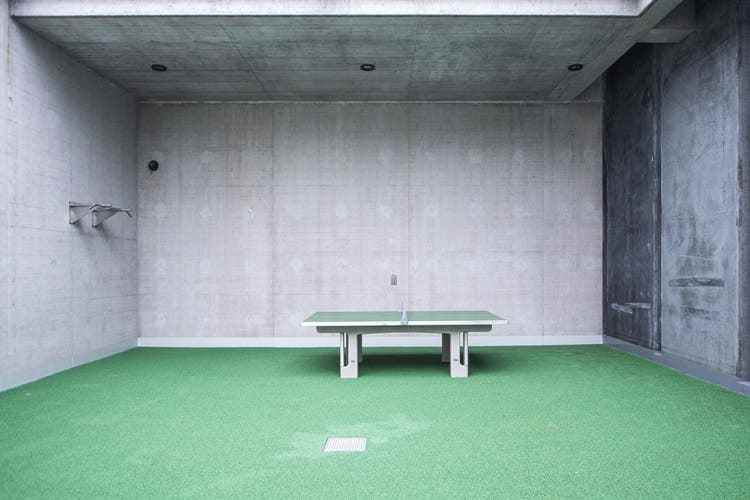
In addition to sports facilities, the playground offers a view of the tracks of the main station.
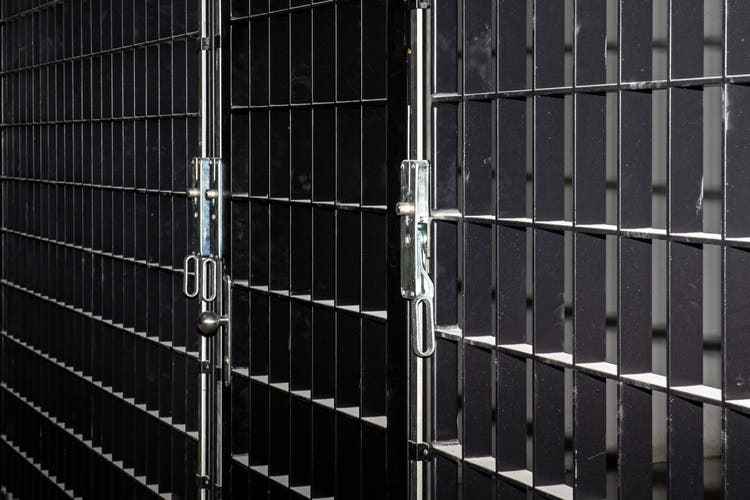
Even a modern police center cannot do without barriers.
The first point cannot be dismissed out of hand. The PJZ is a forbidden zone, but that’s because of its job. The state is not only noble, helpful and good. It is human nature to need a repressive side. In the PJZ prison there are people who have not yet been convicted, i.e. for whom the presumption of innocence applies. It is of course just as inaccessible to the public as the police premises or the offices of the public prosecutor.
Whether it is a law court is in the eye of the beholder. The building is big, quite intimidating. But it is above all a sophisticated functional building, as the short tour for the media on Friday confirmed again. The interrogations take place in rooms right next to the cells, which saves time and transport. The prison is a separately well-secured building under construction. This allows relaxation inside, the occupants can stay more in groups.
The PJZ has an exclusivity: the facade consists entirely of Vert de Salvan, a structured, greenish natural stone from Valais. The architectural scene, which was rather critical of the plans for a long time, seems to have reconciled itself to the design from the Theo Hotz office. The magazine “Hochparterre” honors the PJZ in a special issue with critical overtones as an “imposing building block”.
Once hanging by a thread
As powerful as the PJZ appears today, it was once in a coma. It could only be revived because the referendum in 2003 for the construction of the PJZ took the form of a law. In 2010, after new elections, however, his critics (SVP, Green GLP, EDU) had the majority in the cantonal council. Sue took advantage of them and refused the necessary approval for the construction loan. The planning for 60 million francs was shelved, the project seemed done.
But the legal mandate to build a PJZ remained. What followed was a highly unusual process: the governing council applied to have the law repealed, and its justification was that the PJZ should be built after all. Opponents rejected this again in the council, the PJZ supporters from SP, FDP, CVP, EVP took the referendum and won: In September 2011, the people of Zurich approved the PJZ a second time. The opponents caved in and approved the construction loan.

The PJZ is more than twice as long as the Prime Tower is tall.
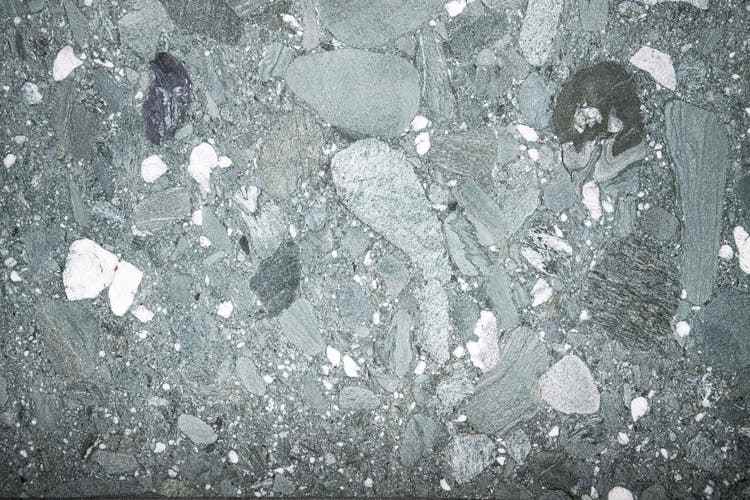
The natural stone of the facade has a very diverse structure.
The PJZ law also threw a spanner in the works for the government. In 2014, she announced that, contrary to what had originally been planned, the cantonal police could not release her building on the Zurich barracks site. Now you can change a law. The cantonal council subsequently added the provision that the police had to clear the barracks area completely when the PJZ went into operation. Thanks to adjustments, the move of the approximately 200 employees from the police barracks to the PJZ was still possible.
Today, as promised for decades, the Kasernenwiese is entirely open to the public. It remains to be seen whether the PJZ, with construction costs of CHF 570 million plus committed expenditure of CHF 190 million, will meet the high expectations of greater efficiency. The processes will definitely be easier, as the canton was able to give up jobs at over 30 locations throughout the city of Zurich and merge them in the PJZ.
